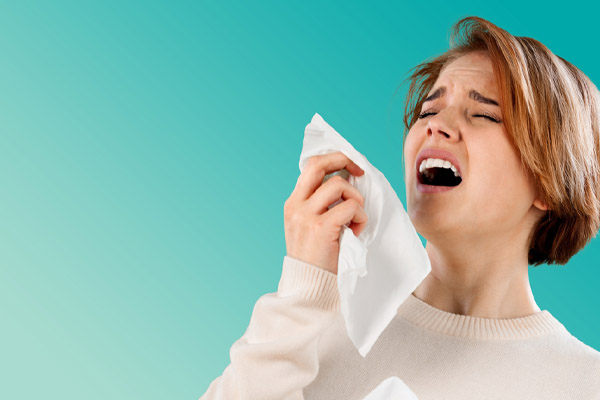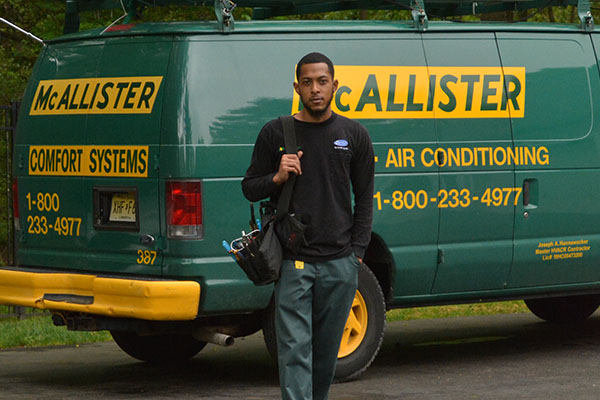Health Impacts of Poor Indoor Air Quality

Did you know that the average person spends around 90% of their time indoors, where air quality can be 2 to 5 times more polluted than outside? This startling fact underscores the critical importance of indoor air quality in our daily lives. Every breath we take inside our homes, workplaces, or public buildings directly impacts our health. Yet, this crucial aspect of poor indoor air quality symptoms often goes unnoticed.
In this article, we’ll explore what indoor air quality really means, delve into its significant health implications, and understand why maintaining optimal air quality, is not just a matter of comfort but a vital health necessity. McAllister Energy aims to ensure the air you breathe indoors is as fresh and healthy as possible.
Introduction to Indoor Air Quality
Contents
Indoor Air Quality (IAQ) refers to the air quality within and around buildings and structures, especially as it relates to the health and comfort of building occupants. IAQ is determined by a variety of factors, including the concentration of pollutants, ventilation effectiveness, and humidity levels. It encompasses a wide range of elements, from carbon monoxide and radon to volatile organic compounds (VOCs) and particulate matter.
Importance of IAQ

The significance of IAQ cannot be overstated. Given that we spend the majority of our time indoors, the quality of the air we breathe inside is paramount to our overall health and well-being. Poor IAQ can lead to a host of health issues ranging from headaches and fatigue to respiratory diseases and even long-term chronic conditions. Therefore, ensuring good indoor air quality is essential not just for comfort but for maintaining good health.
Factors Influencing IAQ
Several factors contribute to the quality of indoor air. These include:
- Building Design: The way a building is designed can significantly affect air circulation and, consequently, air quality.
- Ventilation: Proper ventilation is crucial in exchanging indoor air with fresher outdoor air to dilute indoor pollutants.
- Indoor Activities: Activities like cooking, cleaning, or even using certain personal care products can release pollutants into the air.
- External Environmental Conditions: Outdoor air quality, weather conditions, and even geographic location can influence IAQ.
Understanding these factors is the first step in improving indoor air quality. With McAllister Energy, you can navigate the complexities of IAQ and ensure your indoor environment is healthy and safe.
The Invisible Danger: What Constitutes Poor Indoor Air Quality?
Poor indoor air quality can be attributed to various pollutants, some of which are not easily detectable by sight or smell. Key pollutants include:
- Volatile Organic Compounds (VOCs): VOCs are chemicals found in many household products, such as paints, varnishes, and cleaning agents. They can evaporate into the air and cause health issues like headaches and organ damage with long-term exposure.
- Particulate Matter: Tiny particles or droplets in the air, such as dust, pollen, and mold spores, which can penetrate deep into the lungs and even enter the bloodstream.
- Carbon Monoxide (CO): A colorless, odorless gas produced from burning fuels. In high concentrations, CO can be fatal.
- Radon: A naturally occurring radioactive gas that can enter homes through cracks in the foundation, posing a significant risk of lung cancer.
- Biological Contaminants: These include mold, bacteria, viruses, and pet dander, which can cause respiratory issues and allergic reactions.
Sources of Pollution
Common sources of these pollutants in indoor environments are often everyday items and activities, including:
- Building Materials: Certain insulations, paints, and pressed-wood products can release pollutants into the air.
- Furnishings: Upholstered furniture and carpets can harbor dust mites and mold spores.
- Household Cleaning Products: Many of these products contain chemicals that can contribute to indoor air pollution.
- Heating Systems: Furnaces and heating systems, when not properly maintained, can become significant sources of carbon monoxide and other pollutants.
Regular maintenance and proper ventilation are key to mitigating these pollution sources. With McAllister Energy’s expertise, you can identify and address these invisible dangers in your home or workplace, ensuring a safer, healthier indoor environment.
Acute Health Effects: Immediate Symptoms and Risks

Pollutants in indoor air can irritate the throat, nose, and eyes, leading to discomfort and increased susceptibility to respiratory infections. This is especially critical for individuals with weakened immune systems. Exposure to certain indoor pollutants, particularly VOCs and carbon monoxide, can cause immediate symptoms like headaches and nausea, especially in poorly ventilated areas.
Poor indoor air quality can trigger asthma attacks and exacerbate allergies, presenting symptoms like coughing, wheezing, and shortness of breath in sensitive individuals. Improving indoor air quality is essential for health and comfort. Partner with McAllister Energy to address these issues and create a healthier indoor environment.
Chronic Health Consequences: Long-Term Exposure and Risks
Prolonged exposure to indoor air pollutants like radon and particulate matter can lead to serious respiratory conditions, including chronic obstructive pulmonary disease (COPD) and lung cancer, highlighting the need for sustained air quality management.
There’s a notable link between long-term exposure to indoor air pollutants and increased risk of cardiovascular diseases, such as heart attacks and coronary artery disease, due to adverse effects on blood vessels and heart function.
Emerging studies suggest long-term exposure to poor indoor air quality may impact neurological health, potentially contributing to cognitive decline and an increased risk of neurodegenerative diseases.
Vulnerable Groups: Who is Most at Risk?
Children and the elderly are particularly sensitive to indoor air pollutants. Children’s developing bodies and respiratory systems make them more susceptible to long-term health issues, while the elderly, with often weaker immune systems, are more prone to the adverse effects of poor air quality.
Those with existing respiratory and heart conditions are at increased risk from indoor pollutants, potentially facing worsened symptoms and health complications.
Mitigation and Prevention: Steps to Improve Indoor Air Quality

Adequate ventilation is key to reducing indoor air pollution. It involves not just opening windows but also ensuring proper air circulation with exhaust fans and ventilation systems. This process helps dilute and remove indoor airborne contaminants.
Identifying and reducing sources of indoor pollutants is crucial. This can include using low-VOC products, ensuring appliances are well-maintained, and minimizing the use of air fresheners and candles that release chemicals into the air.
Air purifiers and filters can effectively remove particles and pollutants from indoor air. Additionally, certain houseplants can absorb harmful toxins, though their overall impact on air quality is more supplemental.
Conclusion
Poor indoor air quality can lead to severe health issues. Some poor indoor air quality symptoms include respiratory problems, headaches, chronic diseases and neurological impacts, especially affecting vulnerable groups. Mitigating these risks through source control, better ventilation, and air purification is essential for maintaining good health.
Call McAllister Energy For All Of Your HVAC Requirements

McAllister Energy offers superior heating and cooling services throughout southern New Jersey. We hire the best-certified technicians who can provide you with excellent HVAC tune-ups, repairs, installations, and replacements. Each of our techs has the knowledge and experience to service your HVAC system correctly.
McAllister Energy guarantees the most competitive heating and cooling service costs in the area. Our maintenance services can improve your comfort and increase your energy efficiency while reducing your home heating and cooling costs. If you happen to need an HVAC repair or replacement system, we can recommend the best one for your home while staying within your budget. We back all of our work with a guarantee to ensure your satisfaction. To schedule a service appointment, give McAllister Energy a call today. We offer free, in-home estimates.
You can click here to contact us now or call us at (856) 665-4545 to find out more! Click the link to view our service area.
Related Articles: